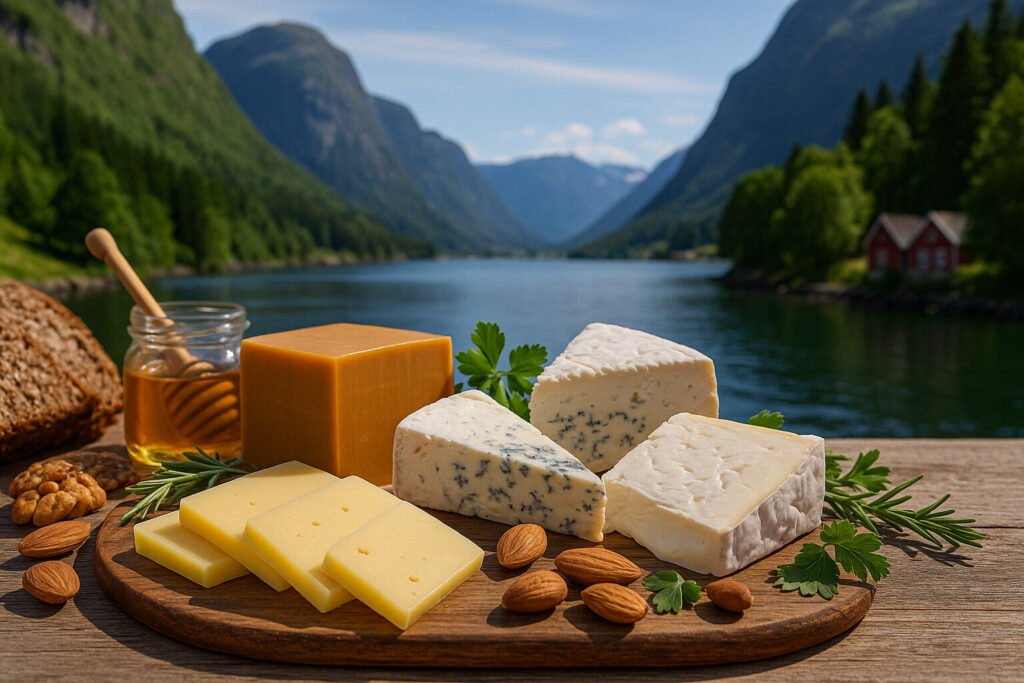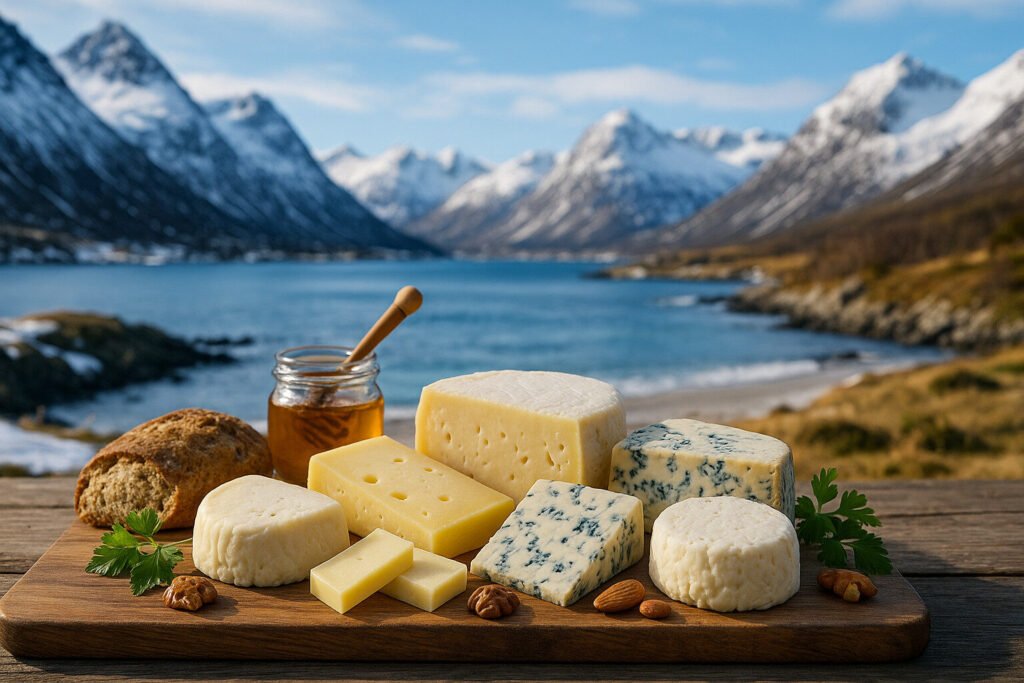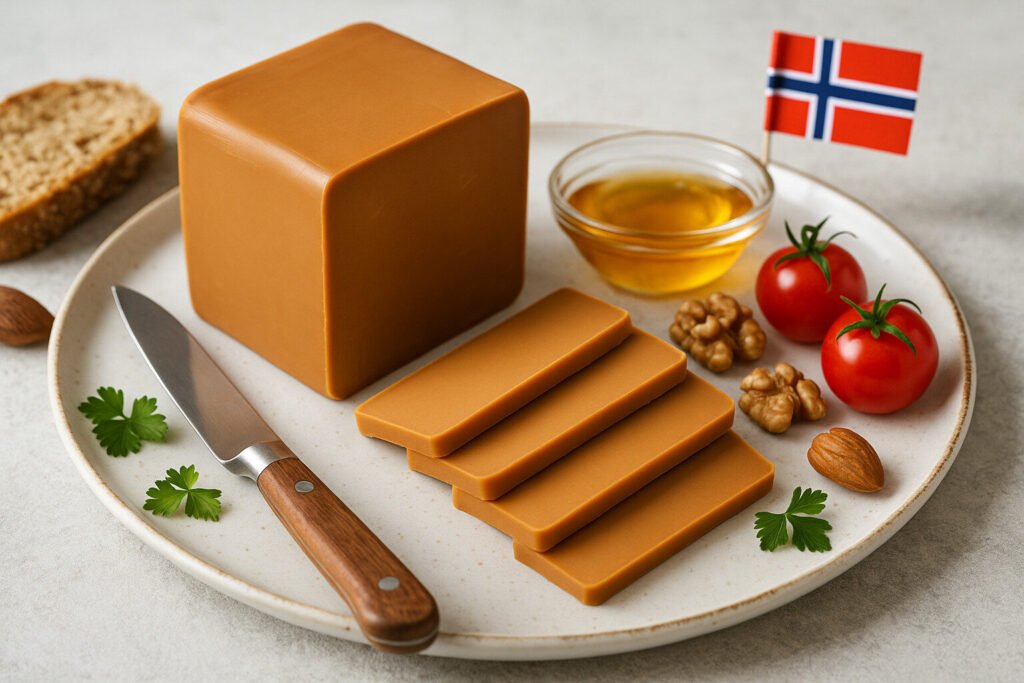Cheese Of Norway
Norwegian Cheese Definition and Scope
Norwegian cheese encompasses dairy products primarily made from cow’s milk, though some varieties incorporate goat’s or sheep’s milk. These cheeses range from fresh, unaged types to semi-hard and hard aged varieties, with many protected by geographical indications. The category is defined by traditional Norwegian dairy practices and adaptation to the country’s cool climate and mountainous terrain.
Key characteristics include the use of pasteurized milk in modern production and distinctive shapes like the brown wax-coated wheels of Jarlsberg. Norwegian cheese production is regulated by Matmerk, the country’s food labeling authority, ensuring quality standards. The scope includes both artisanal farmstead cheeses and large-scale industrial productions that dominate exports.
Norwegian Cheese Production Techniques
Traditional Norwegian cheese-making begins with milk coagulation using microbial rennet, followed by careful curd cutting and heating. The whey is often reserved for making brunost, a unique caramelized whey cheese. Many varieties undergo a pressing stage to achieve their characteristic dense texture before the aging process begins.
Modern facilities employ temperature-controlled aging rooms where cheeses mature for periods ranging from three weeks to over a year. Specific techniques include the proprietary process for Jarlsberg’s iconic holes and the repeated washing of rinds for varieties like Norvegia. The production often incorporates traditional wooden boards and shelves that contribute to flavor development during maturation.
Sensory Profile of Norwegian Cheeses
Norwegian cheeses typically present mild, buttery flavors with subtle sweet and nutty notes, particularly in younger varieties. The texture ranges from semi-soft and pliable in cheeses like Norvegia to firm and sliceable in aged versions. Visual characteristics include pale yellow interiors and distinctive rind treatments, from wax coatings to natural mold development.
As cheeses age, they develop more complex flavor profiles with increased saltiness and umami characteristics. Brunost stands apart with its distinctive caramel sweetness and fudge-like texture. The aroma profile tends to be clean and dairy-forward, with some aged varieties developing earthy undertones and slight sharpness.
Culinary Uses of Norwegian Cheese
Norwegian cheeses serve as versatile table cheeses, commonly featured in open-faced sandwiches known as smørbrød. They melt exceptionally well, making them ideal for traditional dishes like ostesmørbrød (cheese sandwiches) and modern pizza toppings. Grated varieties are frequently used in baking and sauce preparation.
Brunost is traditionally sliced thinly and served on waffles or crispbread for breakfast. Many Norwegian cheeses pair well with crisp apples, dark bread, and lingonberry jam. In professional kitchens, they’re valued for their consistent melting properties in sauces and gratins without becoming greasy or stringy.
Regional Norwegian Cheese Examples
Jarlsberg remains Norway’s most famous export, originating from Våle in Vestfold county, characterized by its mild, nutty flavor and distinctive holes. Norvegia, another prominent variety, is produced throughout southern Norway and recognized for its smooth, creamy texture and mild taste. These cheeses benefit from Norway’s rich pasturelands and pure water sources.
Gamalost, meaning “old cheese,” represents traditional farmhouse production from Vik in Sogn og Fjordane, featuring a sharp, pungent flavor and crumbly texture. Gudbrandsdalsost, the classic brunost, hails from the Gudbrandsdal valley and is made by boiling whey until caramelized. Each region’s microclimate and grazing practices contribute to distinct local cheese characteristics.






